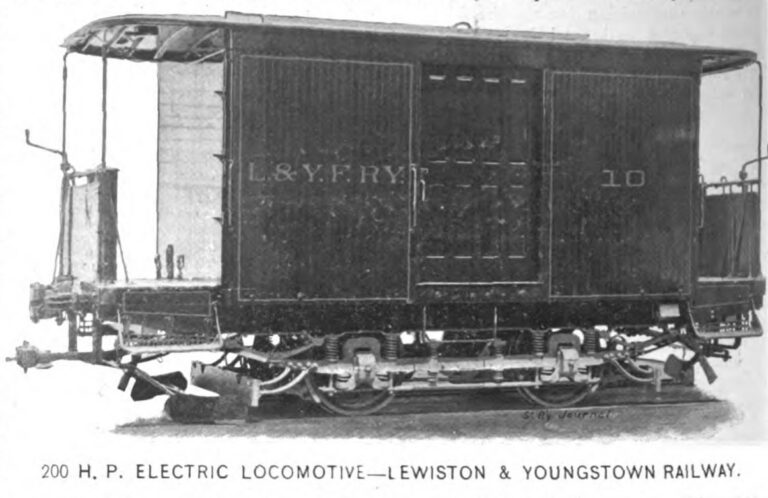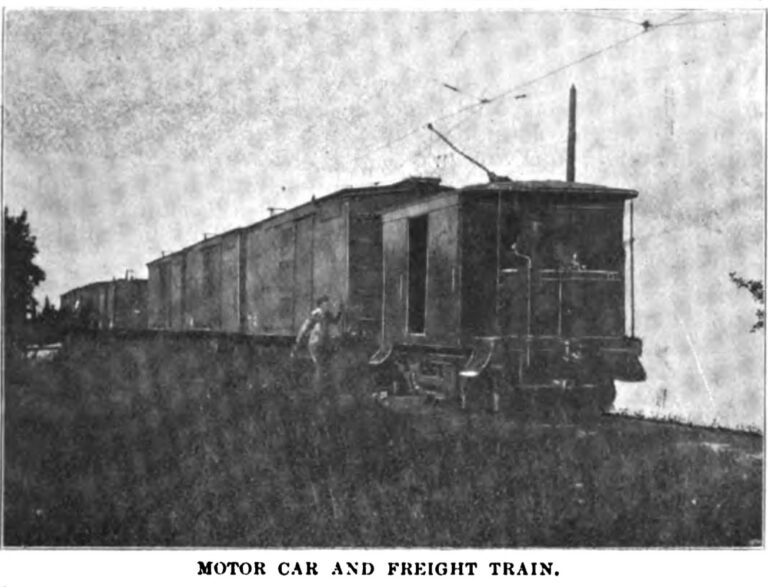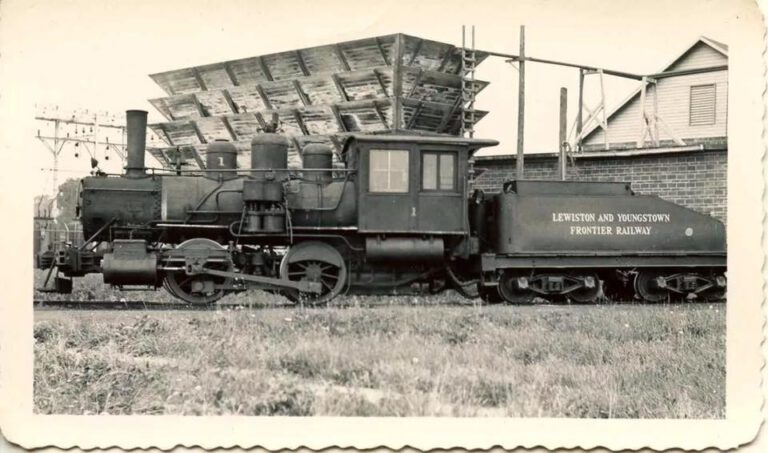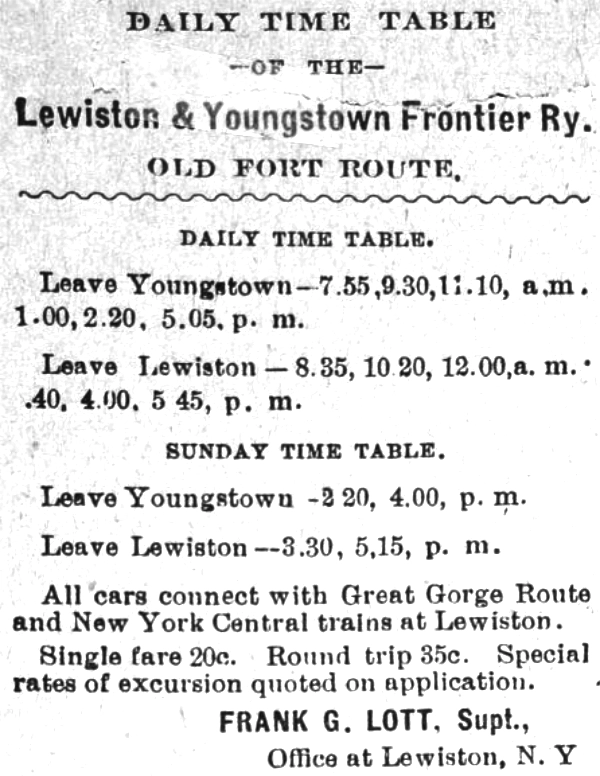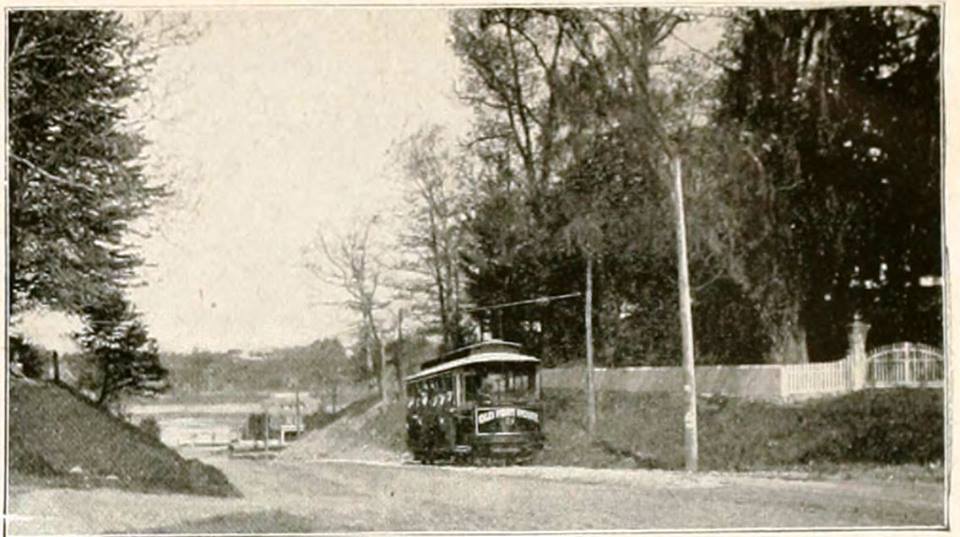
The Lewiston and Youngstown Frontier Railway (L&YFR) was an 8 mile long railroad running north from Lewiston to Youngstown, NY in Niagara County. Through most of its existence it was an electric-powered railroad, but in 1935 it converted to steam and later to diesel power.
The railroad carried both passengers and freight but had very few station buildings or other passenger facilities. In Lewiston it used the New York Central station and in Youngstown it had stops in front of different buildings.
The railroad carried passengers from 1896 until 1926 and continued as a freight-only railroad until it was abandoned in 1950.
History
The company was incorporated on July 29, 1895 and construction began May 1, 1896. The line in the village of Lewiston was completed so that a car was run locally on July 25, 1896. Cars were run between Lewiston and Youngstown on August 8, 1896, but regular service did not start until September 25, 1896.
During the winter and in the spring of 1897 the main line was extended 1,000 feet into Fort Niagara. On June 17, 1897 a one mile long branch was opened from the main line at Youngstown to Rumsey Park, a picnic area on Lake Ontario.
On April 1, 1903 the Lewiston and Youngstown contracted the Niagara Gorge Railroad, another electric line that operated from Niagara Falls to Lewiston, to operate the railroad for a year. At the end of that period the Niagara Gorge Railroad leased the Lewiston and Youngstown and purchased the company in early 1907.
In 1926, the L&YFR filed for abandonment of passenger service, noting that it had not carried any passengers in over two years. The company also abandoned all the tracks north of the village of Youngstown, including the track to Fort Niagara military reservation and the line to Fort Niagara Beach. A March 1927 article in “The Motor Truck” magazine noted that the L&YFR had established city motor bus service.
In 1932 the Youngstown Cold Storage Company purchased the road from the Niagara Gorge Railroad Company and continued a small freight operation until final abandonment in 1950. Around 1935 the railroad switched from electric power to steam and later diesel locomotives.
Operations
The railroad carried residents and tourists between the two towns and in the summer it was a popular route to hotels and vacation homes in the area. It also had a branch to Rumsey Park, a local amusement park. Both Lewiston and Youngstown were ports for passenger steam ships that sailed on Lake Ontario which carried tourists visiting Niagara Falls to locations like Toronto, Ontario, Canada.
The company had a contract with the New York Central and Hudson River Railroad Company for operating cars for a distance of 1,000 feet over their tracks in the freight yards in the village of Lewiston (this without compensation to them) for the purpose of exchanging traffic with that railroad. The tracks and switch connecting with the freight yard are owned and maintained by this company.
Rolling Stock
The company operated a number of different cars, including those powered by electricity, steam, and gasoline.
The company operated four, eight bench open motor cars and two closed combination baggage and passenger cars which seated 16 people, made by the J. G. Brill Company in Philadelphia.
Electric Locomotive Number 10
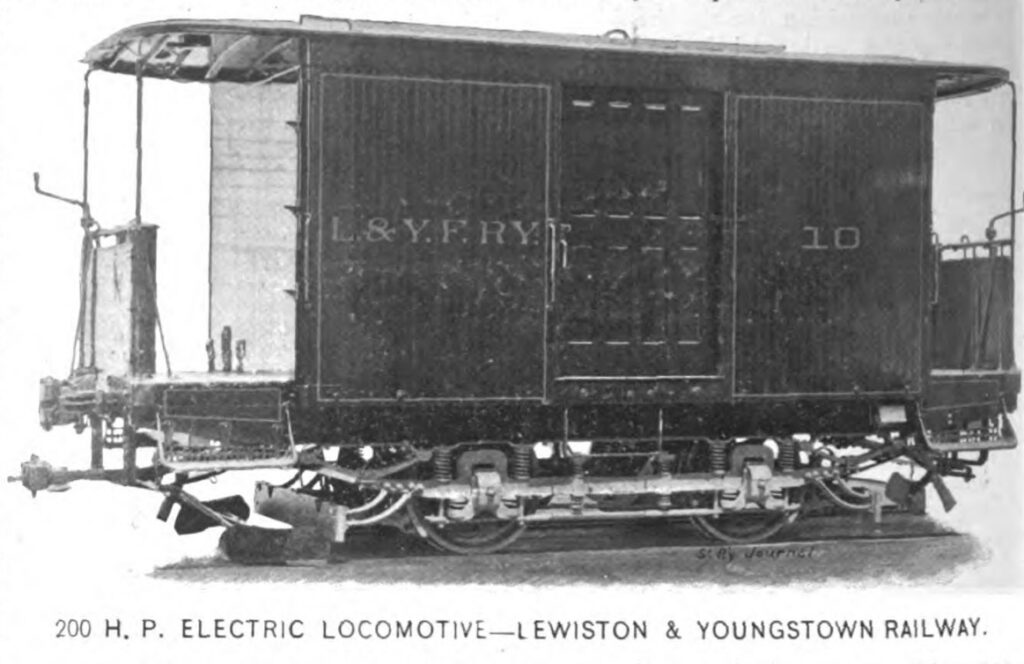
In the summer of 1897 the company put a new electric motor car in service to pull freight trains and occasional passenger trains. An article in a November 26, 1897 issue of The Railway Age magazine describes the motor car.
In order to handle this business without interfering with the regular passenger traffic of the line, the company in August placed in service a motor car which is a novelty. The extreme length of this car is 20 feet, the length of box being 14 feet. From the top of the rail to the top of the car it is 19 feet 8 inches high. It rests on a single truck, especially designed, and has a seven-toot wheel base. It is built of heavy oak timber and weighs about seven tons. It is provided with a Gould automatic coupler and a radial drawbar, so that it can be coupled to ordinary freight cars or to street car trailers, the latter for service during the excursion and picnic season of the summer. The car is equipped with two General Electric 1,200 four-turn motors, and these are wound in such a way as to exert a high tractive effect for a given amount of power. While the motors are not rated at any given horse power, they are in the neighborhood of 50 horse power each. On level grades the motor car can pull 10 loaded freight cars at fair speed. The car is equipped with a snow plow and track scraper in order that it may be used to keep the road open in winter. During the period it has been in operation, the car has given great satisfaction to the company.
Steam Locomotive Number 1

The railroad owned one steam locomotive, which was numbered, unsurprisingly, number 1. There are reports that it started operation in 1935, but that is not clear.
Gasoline-Electric Locomotive
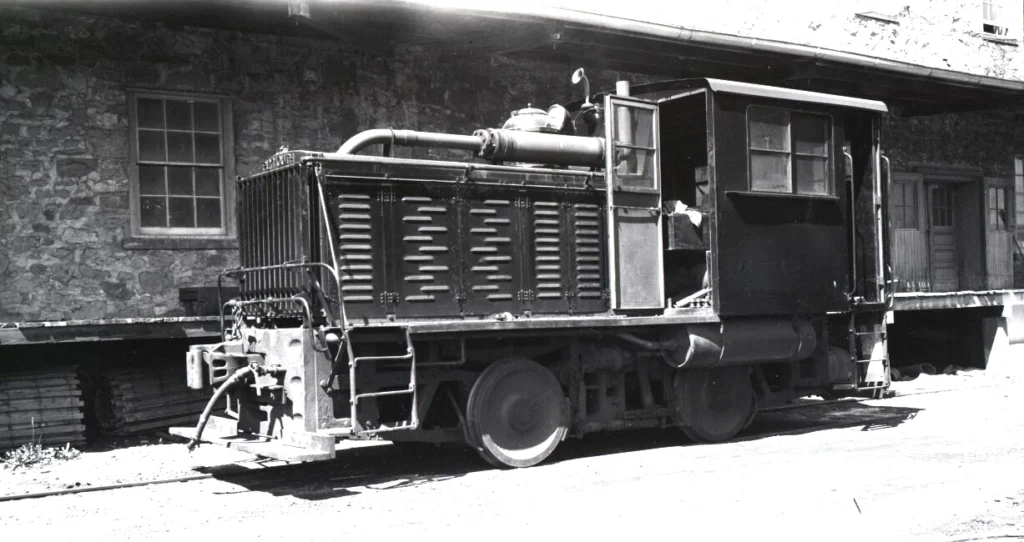
A May 1937 newspaper article talked about the steam locomotive being scrapped and replaced by a diesel-oil locomotive. I don’t know much more about it.
Route
Over the years, the route of the railroad changed, especially the portion running on the streets on Lewiston. In Lewiston, the railroad originally ran from the New York Central depot up Center street to 5th Street and then northerly down 5th street to the village limits. There was a branch from 5th street down Onondaga Street to the New York Central freight station.
It ran over a private right-of-way to 3rd Street in Youngstown, then down Church Street to Main Street and to the United States Military Reservation, Fort Niagara, at the mouth of the Niagara River.
Clippings
Photographs
Maps
Timetables
Learn More
- New York State Department of Transportation. “Inventory of Abandoned Railroad Rights of Way, Region 5“
- Wikipedia. “Lewiston and Youngstown Frontier Electric Railway“



